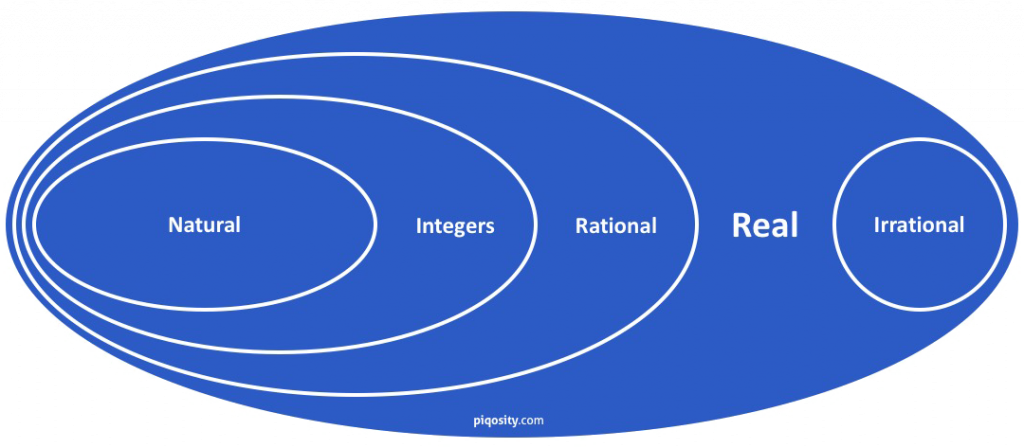
The ISEE will directly and indirectly test your knowledge of number types. For example, a word problem may include rules where its values may only be integers or whole numbers.
Real Numbers (Numbers that Exists)
Natural Numbers
- include positive numbers
- do not include zero
- do not include negative numbers
- do not include decimals or fractions
Whole Numbers
- includes positive numbers
- includes zero
- does not include negative numbers
- does not include decimals or fractions
Integers
- includes positive numbers
- includes zero
- includes negative numbers
- does not include decimals or fractions
Examples
Rational Numbers
- any number that can be represented as a fraction
Examples
Irrational Numbers
- any number that cannot be represented as a fraction
Examples
Imaginary Numbers (Numbers That Don’t Exist)
Imaginary Numbers
- the square root (or even root) of a negative number
- squaring a negative number results in a positive number, thus the square root of a negative number does not exist
- generally represented as i = √-1
Examples
Complex Numbers
- includes a real part (a) and an imaginary part (bi)
- acts like a binomial in calculations
- a + bi
Examples



